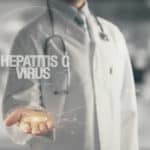New Technology and Methods to Fight Hepatitis C
The purpose of light goes beyond warming the earth’s surface or illuminating a room. Referred to by scientists as electromagnetic radiation, light has wavelengths both visible and invisible to the human eye. Various attempts to help people fight Hepatitis C have included electromagnetic radiation, with reports of success spanning both visible and invisible light.
Invisible Light
With shorter wavelengths than visible light, ultraviolet (UV) radiation is a confirmed environmental human carcinogen. While our sun emits light at all different wavelengths in the electromagnetic spectrum, ultraviolet waves are the portion of light responsible for causing sunburns. However, UV radiation used specifically to target Hepatitis C and other illnesses has been recognized for its potential healing ability.
Ultraviolet Blood Irradiation
Ultraviolet radiation is well-known to purify and deodorize air, sterilize water and destroy bacteria in waste products. First introduced in the 1930s to combat the polio virus, Ultraviolet Blood Irradiation (UBI) was used to remove infections from a person’s bloodstream. Although problems with sterile equipment hampered its success, UBI was considered the first line of defense against infection until the advent of antibiotics and polio’s Salk vaccine.
In modern times, the prevalence of new viral epidemics without a cure or vaccine, including Hepatitis C, has brought back this alternative form of healing. Due to more recent developments in the instrumentation for UBI, controlled application of UV irradiation to the blood within the accepted therapeutic band of light has produced favorable results for infectious diseases of the blood. Additional benefits of UBI are the ability to annihilate several pathogens from the blood at once, and the absence of side effects typically caused by antibiotics or anti-viral medications.
In 2005, Energex Systems, Inc. conducted a successful trial of this technology by reducing viral loads in patients with Hepatitis C. Under investigational device exemption status granted by the U.S. Food and Drug Administration, the trial subjects all had significant viral loads who had previously received Interferon/Ribavirin therapy without a sustained response to treatment.
Researchers extracted three to four percent of the patient’s blood, exposed it to exact amounts of UV light for 20 to 30 minutes, and then returned the irradiated blood to the patient. In each subject, this procedure was repeated five times over a 16-day period. Measured ten weeks after completion of therapy, the results were as follows:
- Three subjects sustained viral load reductions of 90 percent or more
- Eight subjects sustained reductions of 50 percent or more
- Two subjects had no change
While no treatment-related complications from this trial were reported, critics of UBI claim that exposing viruses to UV light can cause genetic mutations. Since a mutation of the Hepatitis C virus would render it even more resistant to therapies currently in development, UBI therapy has remained a fringe alternative therapy in the United States.
Visible Light
Visible light is light that can be perceived by the human eye. When looking at the visible light of the sun, it appears to be colorless, which we call white. Although this light is visible, white light is not considered to be part of the visible spectrum because it is not of a single color or frequency. Instead, white light is a combination of many color frequencies.
In July 2007, scientists from Arizona State University and Johns Hopkins School of Medicine discovered a new method aimed at safely and effectively killing viruses. By using an intense pulse of visible light, the researchers claim that mechanical vibrations rock the virus shell (capsid) causing irreversible damage to its reproduction and ending in the virus’ disintegration. Since UV irradiation is known to cause viral mutations and damage to the DNA of surrounding, healthy cells, the use of visible light is turning heads in the fight against infectious diseases.
The researchers used a power density of 50 megawatts per square centimeter, a quantity low enough to leave surrounding human cells and tissue undamaged, but high enough to produce large-amplitude vibrations in a virus’s capsid. It was also too low to cause genetic mutations, meaning the virus would not build up resistance to this treatment over time.
According to Kong-Thon Tsen of Arizona State University and his colleagues, this method may be especially important in designing novel treatments for blood-borne viral diseases. By irradiating a patient’s blood outside the body, cleansing it of infection, and then reintroducing it back to the patient, mortality associated with diseases like Hepatitis C and AIDS can be greatly reduced.
As medical science refines its use of light’s amazing properties, people with Hepatitis C are likely to benefit. While UBI has been an alternative treatment helping people for many years, the risk of mutating a virus or healthy cells has prevented it from being a popular choice. However, as this technology is refocused on the spectrum of visible light, the risks of irradiating blood may disappear and Hepatitis C may finally meet its match.
References:
O’Brien, CB, et al., Extracorporeal photopheresis alone and with interferon-alpha2a in chronic hepatitis C patients who failed previous interferon therapy, Digestive Diseases and Sciences, May 1999.
http://en.wikipedia.org, Ultraviolet, Wikimedia Foundation, Inc., 2007.
http://in.news.yahoo.com, Visible light pulses to zap HIV, Hepatitis C, Ani-Asian News International, July 2007.
http://science.howstuffworks.com, How Light Works, Craig Freudenrich, PhD, How Stuff Works, Inc., 2007.
http://science.hq.nasa.gov, Ultraviolet Waves, National Aeronautics and Space Administration, 2007.
www.fflt.org, Understanding UV Light Therapy, Health and Wellness Foundation, 2007.
www.hemophilia.org, New Therapy Reduces Hepatitis C Viral Loads in Trial, Drug Law Weekly, National Hemophilia Association, April 2005.
www.newscientisttech.com, Visible light pulses knock out viruses in blood, Belle Dume, July 2007.
www.venicehousepizza.com, IBC Hospital – Blood Ultraviolet Irradiation, Victor Loustaunau MD, Serenelli Desktop Publishing, December 2003.







